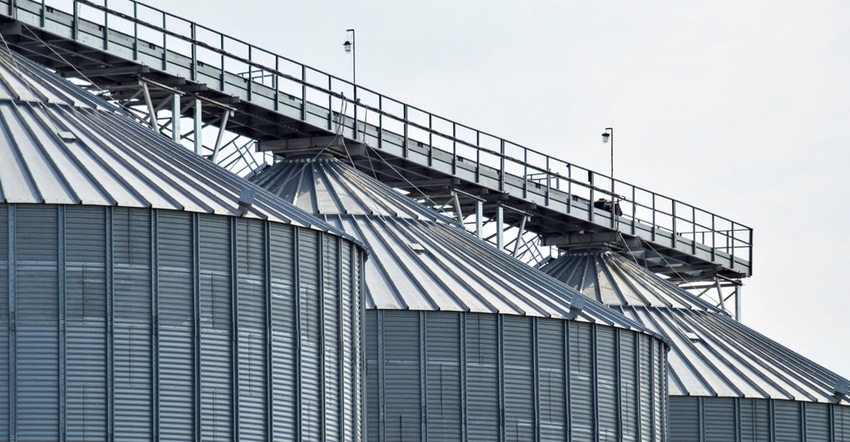
USDA releases its December 2021 World Agricultural Supply and Demand Estimates report tomorrow. However, the December WASDE is typically not as much of a market-moving report as the January one, which features updated corn and soybean production estimates, the first estimates of 2022 wheat acreage, new quarterly grain stocks and usage information, and any additional demand adjustments the World Agricultural Outlook Board deems necessary.
So even if tomorrow’s report does not substantially stir markets, watchers need only wait another month for more fireworks. Still, WAOB is likely to include some significant changes in the December 2021 WASDE that will make it worth watching.
Here is what is catching our eye in tomorrow’s report. USDA releases the monthly WASDE tomorrow at 11am CST. Stay tuned to FarmFutures.com and Twitter for the latest coverage, including live updates and analysis.
Sights narrow on South American production
With all of Brazil’s soybean crop in the ground as of late last week, market action over the past few weeks has been largely dictated upon South American weather forecasts. Brazil is forecast to harvest are record-setting 5.29 billion bushels of soybeans this winter per USDA’s November 2021 forecasts.
But Brazil’s southern regions, specifically the second and third largest producing states of Parana and Rio Grande do Sul, are currently experiencing dry weather patterns. These two states account for approximately 32% of Brazilian soybean production.
Top producing state Mato Grosso, positioned in Brazil’s northern region, has enjoyed adequate rain accumulation in recent weeks. But hot and dry weather conditions are expected to persist in the South over the next week, which could result in crop damage.
The dry forecast opens to the door to USDA potentially downgrading 2021/22 Brazilian soybean production from its current estimates of 5.29 billion bushels. CONAB, Brazil’s state agricultural agency, estimates 2021/22 soybean production at a more conservative 5.22 billion bushels. Other trade projections range between 5.18 billion – 5.33 billion bushels.
But CONAB estimates are historically more conservative than those of USDA. And USDA’s WAOB group is not quick to make drastic forecast changes without a high degree of certainty. Markets may be watching for smaller Brazilian soybean forecasts tomorrow, but don’t be surprise if USDA does not deliver.
Formerly drought-stressed regions of central and Northeastern Argentina enjoyed heavy rains over the past week which bodes well for corn and soybean development ahead of tomorrow’s reports.
Domestic stocks to rise on lackluster exports
Export paces are likely to be a pain point in tomorrow’s WASDE report. Despite U.S. ag exports setting a new monthly high for value in October 2021 shipment volumes for soybeans and wheat all lagged behind October 2020 volumes by 9% and 30%, respectively, according to USDA’s Global Agricultural Trade System which coordinates export data between USDA-Foreign Agricultural Service (FAS) as well as the U.S. Census Bureau.
Weekly FAS-generated export sales data shows that soybean shipments during November 2021 were fractionally higher than those during the same period in 2020, which suggests there might be some overhype for soybean export projections.
Weekly U.S. wheat shipments during November 2021 fared less favorably, registering nearly 10 million bushels (19%) lower than similar shipments in November 2020, according to weekly FAS data.
To be sure, the high prices paid for these commodities helped ease some of the market discomfort of lower sales volumes. Over $17.6 million worth of U.S. ag products were sold and shipped to overseas buyers during October, which was the highest nominal dollar value of monthly U.S. ag exports on record and the largest since November 2013 ag shipments recorded $16.2 billion worth of value.
Trade estimates suggest that a cut in export forecasts for both soybeans and wheat would raise 2021/22 U.S. ending stocks for both commodities which could introduce some bearish price action if USDA’s cuts are larger than what the market is currently expecting.
Ethanol continues its boom
You may notice that even though bearish pressure is anticipated for soybeans and wheat, corn has a higher likelihood of seeing increased usage revisions in tomorrow’s WASDE report.
That is due in large part to expanding ethanol output over the past two months. According to U.S. Energy Information Administration (EIA) data on weekly ethanol output released yesterday, average daily production has seen four of the eight largest weekly ethanol output volumes over the past eight weeks as green energy demand and high fuel prices create niche opportunities for the ethanol industry this fall.
A bit of redneck math on EIA estimates finds that average weekly corn consumption rates for ethanol production total out to 494 million bushels in November 2021. To be sure, this estimate trends on the high side. But October 2021 USDA figures for corn consumption for ethanol came in at a staggering 469.3 million bushels – the highest monthly volume since January 2020.
The Biden Administration outlined higher biofuel blending targets for 2022 on Tuesday. For the moment, it seems like the sky is the limit for ethanol production which could create bullish price pressures for corn in tomorrow’s WASDE report.
Global stocks at mercy of South America, China
China’s soybean import paces are markedly lower than the same time last year as soy crush margins remain largely negative. Chinese hog prices also remain depressed after an ambitious recovery effort following 2018’s African swine fever devastation has left the country awash in hog volumes.
Since soymeal is a primary feed ingredient for hog rations in China, hog volumes can be a leading indicator of soy usage prospects in the world’s largest soybean importer.
While U.S. demand adjustments and South American production forecasts are the most likely to tip the scales in tomorrow’s WASDE report, watch for any adjustments to Chinese grain forecasts also. It is always high on my watch list since China has become the world’s largest importer of coarse grains and oilseeds.
Markets will be closely watching Australian wheat production figures, also. Expectations for a bumper crop were somewhat tarnished in the Land Down Under this past month after excessive rains during wheat harvest incurred quality damage and yield loss.
Australia is forecast to see dryer weather this week that could ease concerns about its wheat crop. Following the 2021 global wheat shortfall in the Northern Hemisphere and seemingly insatiable global demand for high-protein wheat varieties, any significant downgrades to Australian wheat estimates could further drive up global wheat prices.
Read more about:
WASDEAbout the Author(s)
You May Also Like






